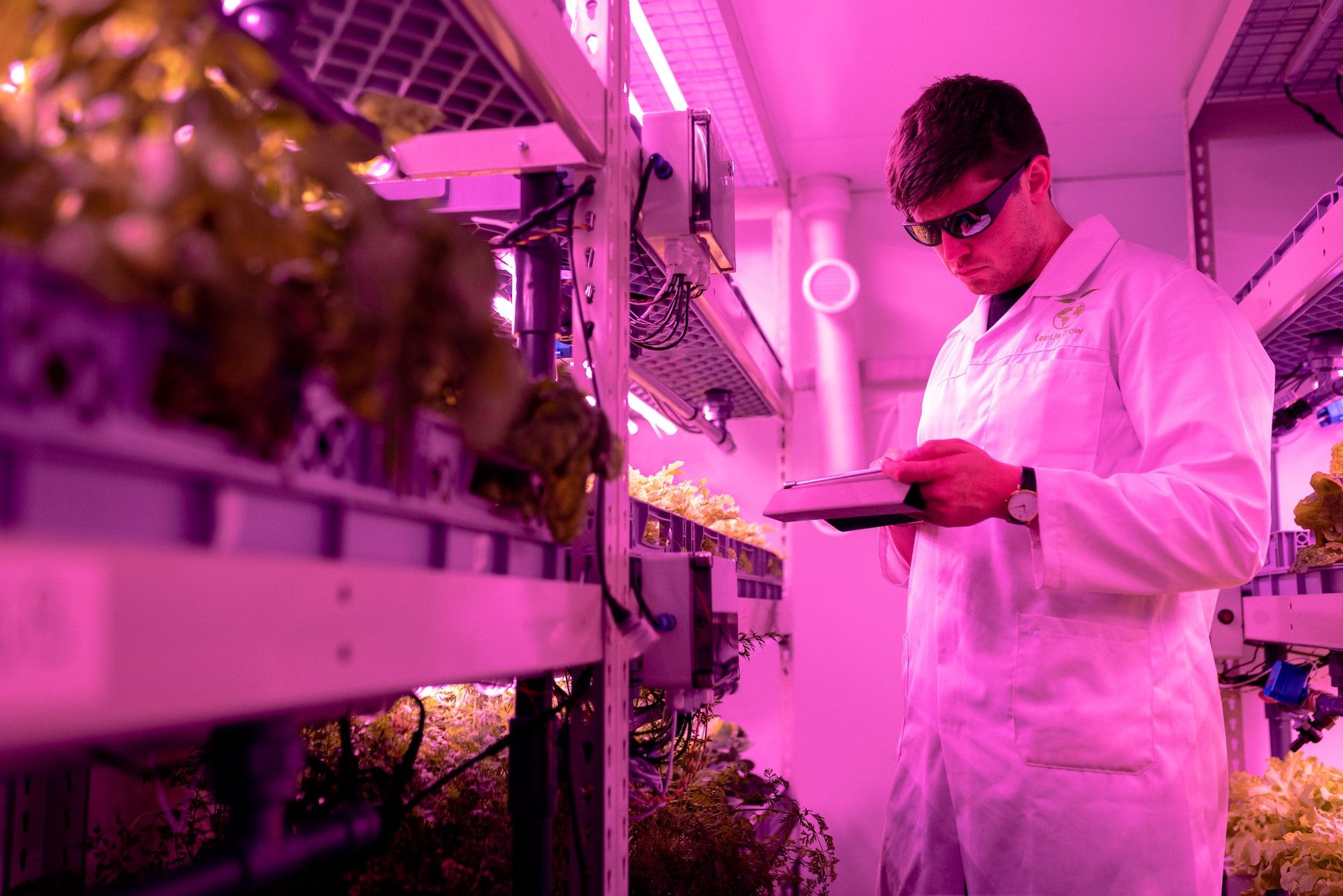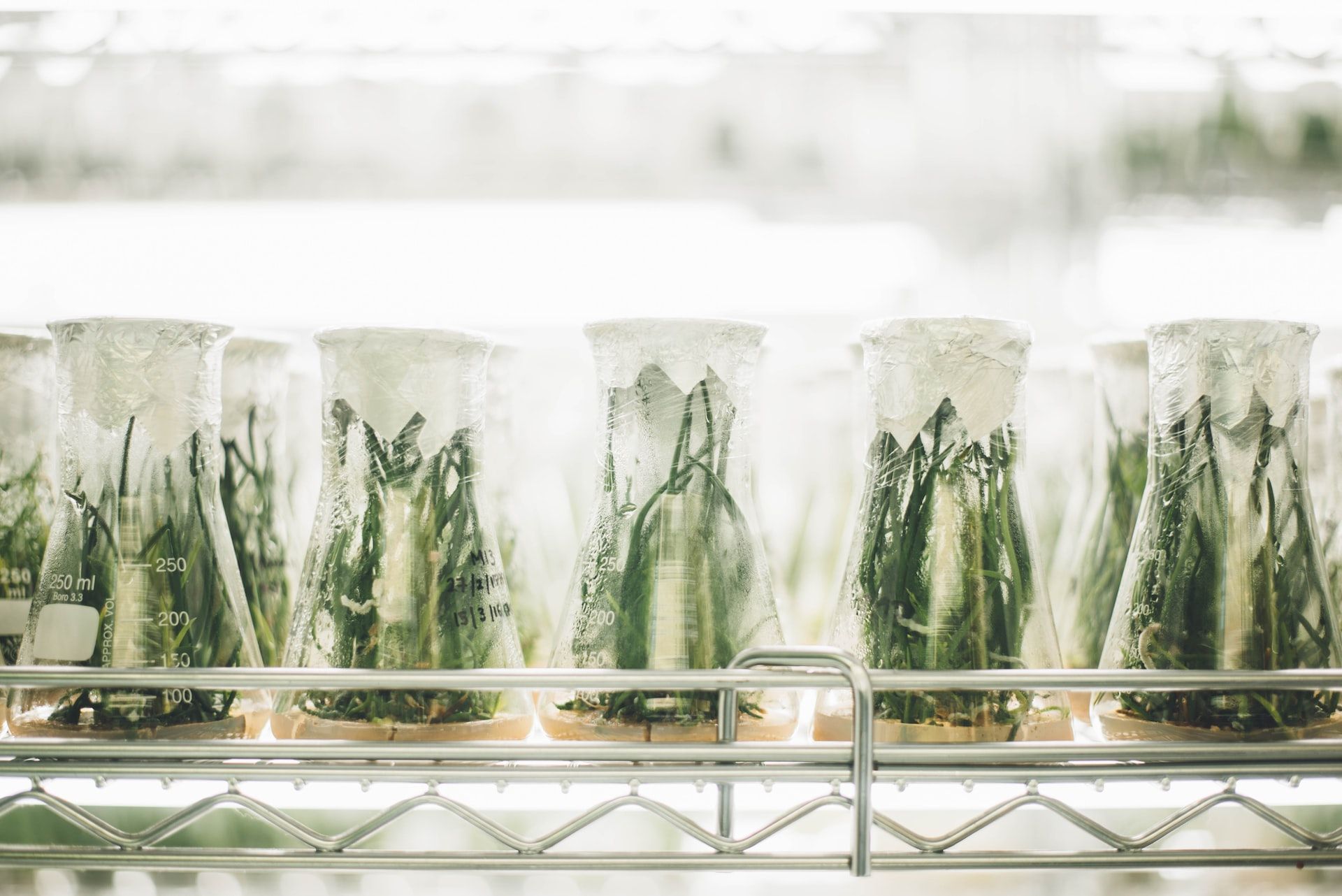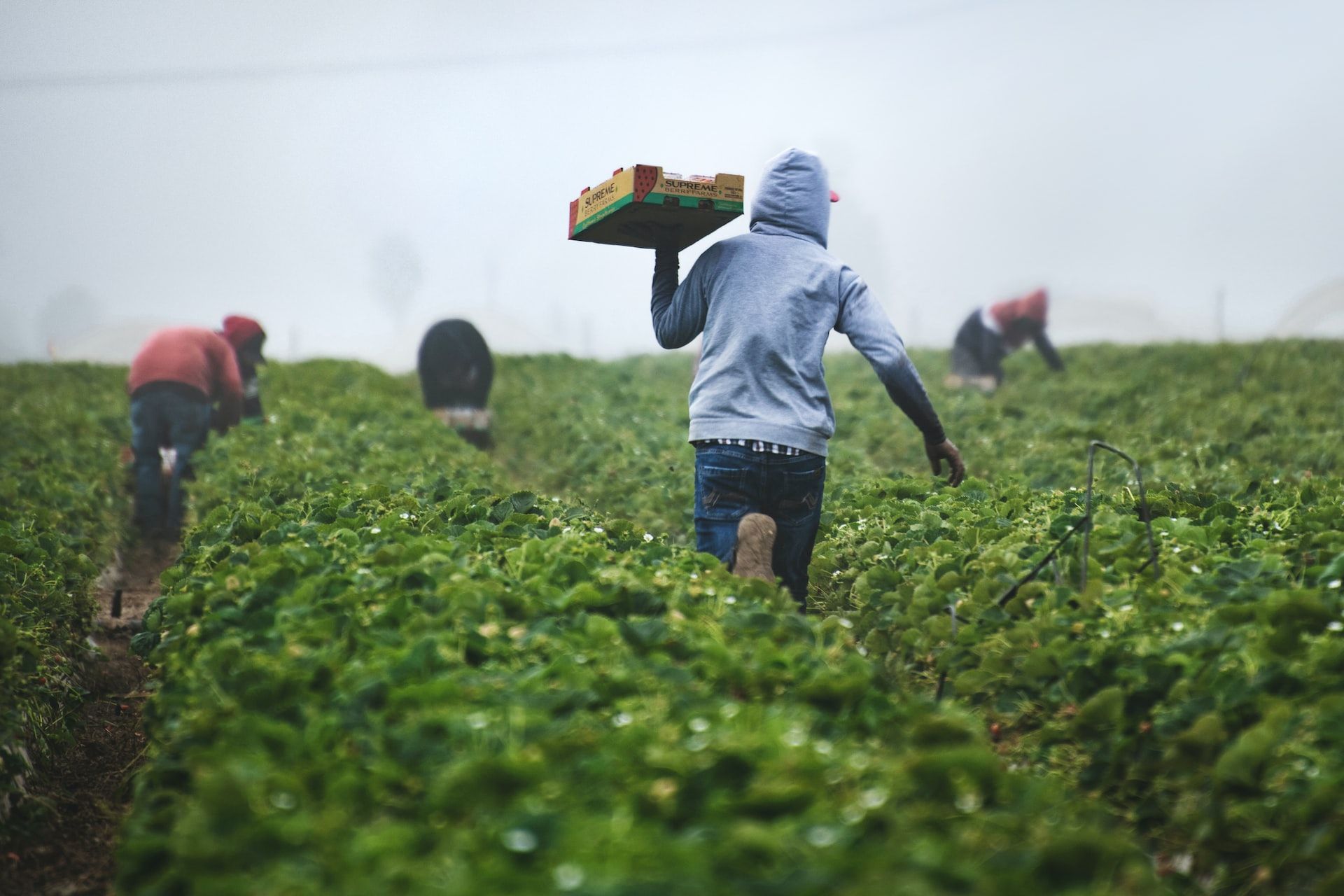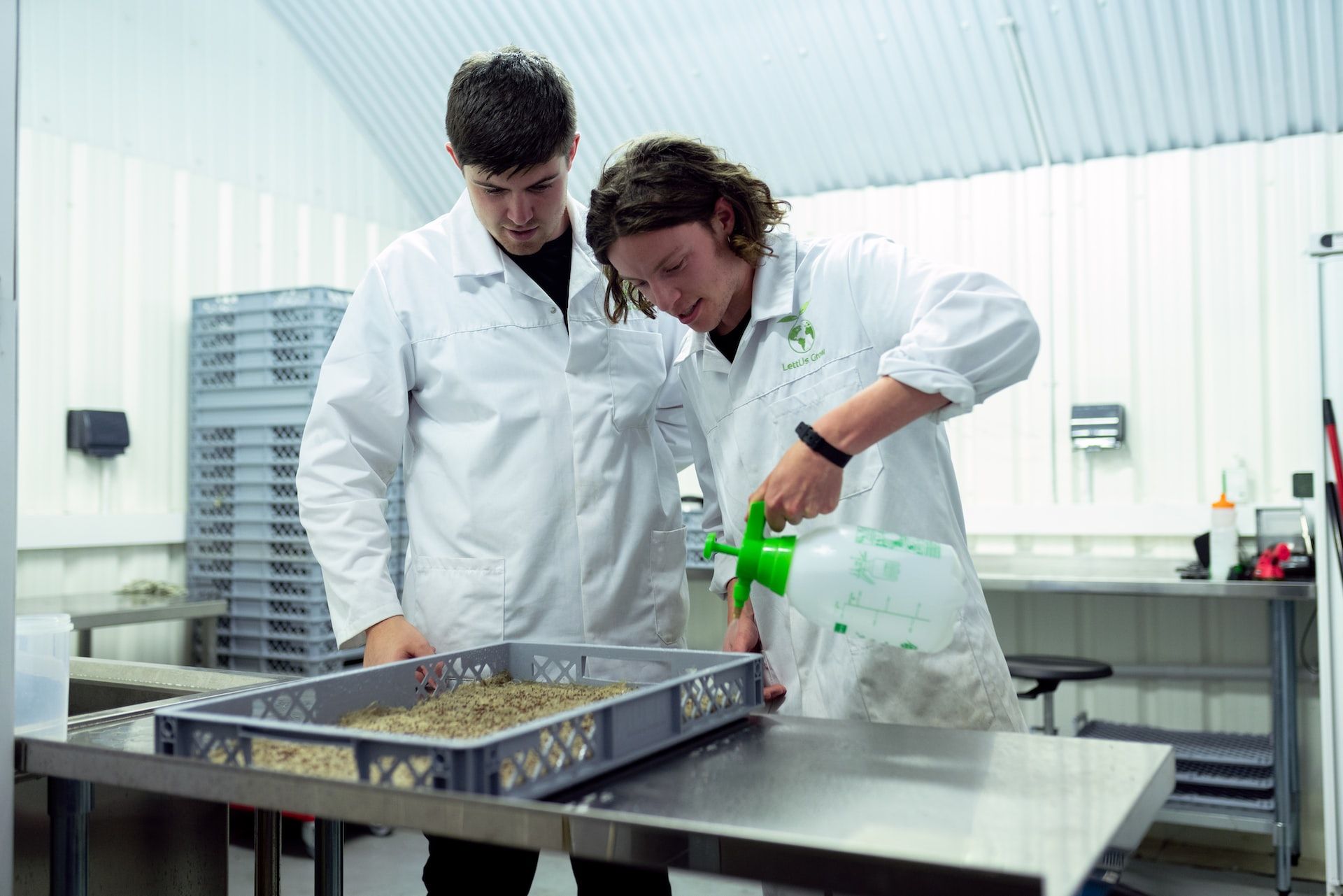Food manufacturing is an important industry that employs millions of people around the world. The process of creating food products begins with harvesting crops, vegetables and fruits, which are then processed into foods like bread, cereal, pasta, meat products and dairy goods.
Food manufacturing is crucial to the healthy functioning of our economy and relies on strict quality control measures to ensure safety and consistency.
Factory-produced food is absolutely safe to eat. In fact, it's often more regulated and inspected than food produced by small farmers. The reason for this is simple: factory food is industrialized and standardized, which makes it easier to keep track of and eliminate any potential contamination. Every step in the production process from growing to packaging is scrutinized meticulously to ensure quality and safety.
In today’s guide, we’ll learn about quality control in food manufacturing and its related concepts. Let’s take a look at the table of content below:
- Quality Control in Food Manufacturing
- Significance of Quality Control in Food Manufacturing
- Goals of Quality Control in Food Manufacturing
- Important Characteristics of Food Quality Control System
- Quality Control and Compliance
- Key Food Quality Control Procedures
- When to Perform Food Quality Control?
- Tools and Techniques for Quality Control in Food Manufacturing
- Challenges in Quality Control in Food Manufacturing
- Benefits of Quality Control in Food Manufacturing
- Case Studies
- Final Conclusion
- How Deskera Can Assist You?
Quality Control in Food Manufacturing
Quality control in food manufacturing is a process that ensures that food products meet specific quality standards and regulatory requirements before they are released to the market.
It further involves monitoring and testing raw materials, production processes, and finished products to ensure that they meet certain specifications and are safe for consumption.
Quality control in food manufacturing is crucial for maintaining product consistency, ensuring food safety, and meeting consumer expectations.
Significance of Quality Control in Food Manufacturing
The significance of quality control in food manufacturing cannot be overstated. It plays a crucial role in ensuring that food products are safe, of high quality, and meet regulatory requirements. Some of the key reasons why quality control is significant in food manufacturing are:
- Food safety: Quality control is essential for preventing foodborne illnesses and ensuring that food products are safe for consumption. By identifying and controlling potential hazards in the production process, quality control can help prevent contamination of food products.
- Compliance with regulations: Quality control helps ensure that food products comply with local and international regulations and standards. Failure to comply with these regulations can result in fines, product recalls, and reputational damage.
- Product consistency: Quality control is important for maintaining product consistency and ensuring that customers receive the same quality product every time they purchase it. This helps build brand loyalty and trust.
- Cost savings: Quality control can help identify and eliminate non-conforming products, which can result in cost savings for the company. It can also help identify areas for process improvement, which can lead to increased efficiency and reduced waste.
- Reputation: Quality control is essential for protecting the reputation of the company. A single incident of contaminated or unsafe food can have a significant negative impact on the company's reputation and bottom line.
Consequently, quality control in food manufacturing is crucial for protecting public health, complying with regulations, maintaining product consistency, reducing costs, and protecting the reputation of the company.
Goals of Quality Control in Food Manufacturing
The goals of quality control in food manufacturing are to ensure that food products meet certain standards of quality, safety, and consistency.
The specific goals may vary depending on the type of food product and the regulatory requirements in the region. However, some common goals of quality control in food manufacturing include:
- Ensuring that the food products meet regulatory requirements and comply with food safety regulations.
- Preventing contamination of food products by identifying and controlling potential hazards in the production process.
- Maintaining product consistency and quality by monitoring production processes, raw materials, and finished products.
- Improving efficiency and reducing waste by identifying and eliminating non-conforming products.
- Enhancing customer satisfaction by providing safe and high-quality food products.
- Protecting the reputation of the company by avoiding product recalls and negative publicity.
- Continuously improving the quality control process by implementing feedback and making necessary improvements.
Important Characteristics of Food Quality Control System
Following, we’ve discussed important characteristics of food quality control system. Let’s learn:
Proactive (Preventive) Quality Control
Proactive quality control, also known as preventive quality control, is a proactive approach to quality control that focuses on preventing quality issues before they occur.
Furthermore, it is a systematic and continuous process of identifying potential quality problems, analyzing their root causes, and taking preventive actions to eliminate them.
Proactive quality control is based on the principle that prevention is better than correction, and that it is more efficient and cost-effective to prevent quality issues than to correct them after they have occurred.
Some of the key elements of proactive quality control include:
- Risk assessment: Identifying potential risks and hazards in the production process and supply chain, and assessing their likelihood and severity.
- Root cause analysis: Identifying the root causes of quality issues and taking corrective and preventive actions to eliminate them.
- Continuous improvement: Continuously reviewing and improving the quality control process based on feedback and data analysis.
- Training and education: Providing training and education to personnel on quality control procedures, best practices, and regulatory requirements.
- Standardization: Developing and implementing standardized procedures and processes to ensure consistency and quality.
- Collaboration: Encouraging collaboration and communication between different departments and stakeholders to identify and prevent quality issues.
Food industry may prevent quality problems and guarantee the production of safe and high-quality goods by practicing proactive quality control. The chance of product recalls, damage to their reputation, and legal responsibility can be decreased by food industry by recognizing potential risks and hazards and implementing preventive measures to eliminate them.
Reactive Quality Control
Reactive quality control, also known as corrective quality control, is a reactive approach to quality control that focuses on correcting quality issues after they have occurred.
It further involves detecting and addressing quality issues through inspection, testing, and analysis of non-conforming products, customer complaints, and other quality-related incidents.
Reactive quality control is often used as a backup to preventive quality control, as it is not always possible to prevent all quality issues from occurring.
Some of the key elements of reactive quality control include:
- Root cause analysis: Identifying the root causes of quality issues and taking corrective and preventive actions to eliminate them.
- Inspection and testing: Inspecting and testing non-conforming products and analyzing the results to identify quality issues.
- Documentation and tracking: Documenting quality issues, actions taken, and outcomes, and tracking the effectiveness of corrective actions.
- Communication and collaboration: Communicating quality issues and corrective actions to relevant stakeholders, such as production personnel, suppliers, and customers, and collaborating to address quality issues.
- Continuous improvement: Continuously reviewing and improving the quality control process based on feedback and data analysis.
While reactive quality control can help food industries address quality issues and prevent them from recurring, it is generally less effective and more costly than proactive quality control.
This is because reactive quality control involves the cost of analyzing non-conforming products, taking corrective actions, and potentially recalling or disposing of non-conforming products.
As such, food industries should aim to prioritize preventive quality control and minimize the need for reactive quality control.
Quality Control Culture
Quality control culture refers to the values, attitudes, and behaviors that prioritize and support quality control in a food manufacturing organization. A strong quality control culture involves a shared commitment to producing safe and high-quality products, and a willingness to invest time, resources, and effort into maintaining and improving quality control processes.
Some of the key characteristics of a quality control culture include:
- Leadership commitment: Top management demonstrates a commitment to quality control by providing the necessary resources, setting quality goals, and actively participating in quality control activities.
- Employee engagement: All employees are involved in quality control activities and encouraged to contribute to continuous improvement efforts.
- Accountability: All employees are held accountable for maintaining and improving quality control processes and are empowered to take action to prevent quality issues.
- Continuous improvement: The organization continuously seeks to improve quality control processes and encourages innovation and experimentation.
- Communication and collaboration: The organization fosters open communication and collaboration between different departments and stakeholders to identify and address quality issues.
- Training and education: The organization provides training and education to employees on quality control procedures, best practices, and regulatory requirements.
- Data-driven decision-making: The organization collects and analyzes data on quality control processes and uses this information to make informed decisions and drive continuous improvement.
A strong quality control culture is essential for food manufacturing organizations to produce safe and high-quality products, maintain customer satisfaction, and comply with regulatory requirements.
Organizations can ensure that all staff members are dedicated to upholding and enhancing quality control procedures by establishing a culture of quality control. This will also help to ensure that quality control becomes an intrinsic part of the organization's entire strategy and operations.
Quality Control and Compliance
Quality control and compliance are essential aspects of food manufacturing, as they ensure that food products are safe, of high quality, and meet regulatory requirements.
Furthermore, quality control focuses on monitoring and improving the quality of products and processes, while compliance involves meeting legal and regulatory requirements.
Some of the key regulations and standards that food industries need to comply with include:
- Food safety regulations: Food industries need to comply with food safety regulations such as the Food Safety Modernization Act (FSMA) in the United States, the European Union's General Food Law, and the Codex Alimentarius food safety standards.
- Quality management standards: Quality management standards such as ISO 9001 provide a framework for implementing and maintaining quality control processes.
- Good Manufacturing Practices (GMPs): GMPs provide guidelines for ensuring that food products are manufactured, processed, and packaged under sanitary conditions and meet quality standards.
- Hazard Analysis and Critical Control Points (HACCP): HACCP is a systematic approach to identifying and controlling potential hazards in the food production process.
For the food industry to guarantee the safety and quality of their products, uphold consumer confidence, and stay out of legal and regulatory trouble, effective quality control and compliance are essential.
Food industries may make sure that their goods are safe, of high quality, and satisfy customer and regulatory needs by putting in place effective quality control methods and adhering to rules and standards.
Key Food Quality Control Procedures
Even if they don't cover all that has to be monitored, the following are some of the most important quality control techniques that every facility that produces food should have:
Ingredient Specifications:
Ingredient specifications are written documents that provide detailed information about the ingredients used in food products. These specifications include information such as the name of the ingredient, its source, quality standards, physical and chemical properties, and any restrictions or limitations on its use.
Ultimately, ingredient specifications are essential to ensure that only high-quality ingredients are used in food products and that they are used in the correct amounts.
Approved Supplier List:
An approved supplier list is a list of suppliers who have been approved to provide ingredients or other materials to a food manufacturing company. Suppliers are typically approved based on their ability to meet quality standards and regulatory requirements. Maintaining an approved supplier list is critical to ensure that only high-quality materials are used in food products.
Product Formulation/Recipe:
A product formulation or recipe is a detailed document that outlines the ingredients, quantities, and processing steps needed to manufacture a specific food product. The formulation or recipe is typically developed by food technologists or product development teams and is critical to ensure consistency in product quality and to prevent errors in ingredient selection and processing.
Manufacturing Procedures:
Manufacturing procedures are written documents that provide detailed instructions for how to manufacture a specific food product. These procedures include information such as the sequence of processing steps, equipment specifications, and quality control checks. Manufacturing procedures are critical to ensure that products are manufactured consistently and to a high standard of quality.
In-Process Records:
In-process records are documents that record information about the processing of a food product during production. These records include information such as processing times, temperatures, and other key process parameters.
Furthermore, in-process records are critical to ensure that products are manufactured to the desired specifications and to identify and correct any quality issues that arise during production.
Packaging and Labeling:
Packaging and labeling are critical aspects of food quality control as they provide important information to customers, including ingredients, nutritional information, and handling and storage instructions. Packaging and labeling must meet regulatory requirements and be consistent with the product formulation and manufacturing procedures.
Environmental Monitoring:
Environmental monitoring involves testing the production environment for potential sources of contamination, such as microorganisms, allergens, and foreign materials. Environmental monitoring is critical to prevent contamination of food products and to identify and correct any potential sources of contamination.
Implementing these key food quality control procedures is critical to ensure that food products are safe, of high quality, and meet customer and regulatory requirements.
By implementing effective quality control procedures, food industries can prevent quality issues, minimize the risk of product recalls, and maintain customer trust and satisfaction.
When to Perform Food Quality Control?
Food quality control should be done throughout the entire production process, from receiving raw materials to shipping finished products. This includes:
- Receiving: Raw materials should be inspected upon arrival to ensure that they meet the required specifications and are free from contamination.
- Storage: Raw materials and finished products should be stored under appropriate conditions to maintain their quality and prevent contamination.
- Preparation: Food products should be prepared according to the approved formulations and manufacturing procedures.
- Processing: During processing, in-process controls should be in place to monitor critical process parameters and ensure that the products meet the required specifications.
- Packaging: Finished products should be packaged in appropriate packaging materials to maintain their quality and prevent contamination.
- Labeling: The labeling of the finished product should be reviewed to ensure that it contains accurate and appropriate information.
- Shipping: Finished products should be shipped under appropriate conditions to maintain their quality and prevent contamination.
In summary, quality control should be a continuous process throughout the entire production cycle to ensure that the products meet the desired specifications and are safe for consumption.
Tools and Techniques for Quality Control in Food Manufacturing
Following, we’ve discussed some crucial tools and techniques for quality control in food manufacturing. Let’s discuss:
Inspection and Testing:
Inspection and testing are essential tools for quality control in food manufacturing. Inspection involves the examination of the food product, raw materials, packaging, equipment, and the entire manufacturing process to ensure that they meet the required standards.
Testing involves the use of scientific methods to analyze food samples for various parameters such as nutritional content, microbiological safety, and sensory quality.
The inspection and testing process should be comprehensive and cover all stages of food production, from the receiving of raw materials to the packaging and shipping of the finished products. Food manufacturers should have a well-defined testing program that includes the selection of appropriate testing methods, sampling procedures, and acceptance criteria.
Sampling Plans:
Sampling plans are used to determine the number of samples that should be taken from a batch or lot of food products for testing purposes. A well-designed sampling plan ensures that representative samples are taken and tested, and that the results are reliable and accurate.
There are several samplings plans that food manufacturers can use, including random sampling, systematic sampling, and stratified sampling. The choice of sampling plan will depend on the characteristics of the food product, the testing requirements, and the level of confidence required in the results.
Quality Assurance Programs:
Quality assurance programs are systems that ensure that the food products meet the required standards and specifications. The program should cover all aspects of food production, from the selection of raw materials to the shipping of the finished product.
A comprehensive quality assurance program includes policies, procedures, and guidelines that guide all aspects of food production. It also includes training programs for employees, documentation requirements, and regular audits and inspections to ensure compliance with the program.
Quality Control Software:
Quality control software is a computer program that helps food manufacturers manage their quality control processes. The software can automate the sampling process, track test results, and provide real-time monitoring of the manufacturing process.
Quality control software can also generate reports, trend analysis, and alerts for non-conformances, enabling manufacturers to take corrective actions promptly. The software can also integrate with other systems, such as inventory management and logistics, to provide a comprehensive view of the manufacturing process.
In conclusion, important tools for quality control in food processing include inspection and testing, sampling strategies, quality assurance plans, and quality control software. A thorough quality control system should be put in place by food producers to guarantee that their goods fulfil the necessary requirements for standards and specifications as well as legal requirements for food safety.
Challenges in Quality Control in Food Manufacturing
Following, we’ve discussed challenges that emerges when it comes to quality control in food manufacturing. Let’s discuss:
Food Safety Regulations and Compliance:
One of the major challenges in quality control in food manufacturing is ensuring compliance with food safety regulations. Regulations vary by country and can be complex, making it difficult for manufacturers to keep up with the latest requirements. Failure to comply with regulations can result in fines, recalls, and damage to the company's reputation.
Food manufacturers need to stay up to date with regulatory changes and have systems in place to ensure compliance. This may involve investing in specialized software, hiring regulatory experts, and implementing regular audits and inspections.
Supply Chain Management:
Supply chain management is another challenge in quality control in food manufacturing. Manufacturers need to ensure that their suppliers meet their standards for quality, safety, and sustainability. This involves conducting regular audits of suppliers and monitoring their performance to ensure they meet requirements.
Manufacturers also need to ensure that their products are transported and stored under the appropriate conditions to maintain quality and safety. This can be challenging, especially when dealing with complex supply chains involving multiple countries and suppliers.
Automation and Technology:
Automation and technology offer opportunities for improving quality control in food manufacturing, but they also present challenges. Implementing new technologies can be costly, and staff may require additional training to use them effectively.
There is also a risk of overreliance on technology, leading to a decrease in human oversight and attention to detail. Manufacturers need to ensure that technology is used appropriately and that it enhances, rather than replaces, human decision-making and problem-solving.
Staff Training and Development:
The success of quality control in food manufacturing depends on the knowledge and skills of staff. However, turnover can be high in the food industry, and training new staff can be time-consuming and costly.
Manufacturers need to invest in ongoing training and development programs for staff to ensure that they have the knowledge and skills to maintain quality control standards. This may involve providing training on new technologies, regulatory compliance, and best practices for quality control.
Consequently, quality control in food manufacturing is critical for ensuring food safety, maintaining quality, and complying with regulations. However, it is not without its challenges. Food manufacturers need to stay up to date with regulatory changes, manage their supply chains effectively, implement technology appropriately, and invest in staff training and development to overcome these challenges and ensure the success of their quality control programs.
Benefits of Quality Control in Food Manufacturing
Following, we’ve discussed crucial benefits of quality control in food manufacturing. Let’s discuss:
Improved Product Quality:
Quality control is essential for improving the quality of food products. By monitoring and controlling the production process, manufacturers can ensure that products meet the required standards for safety, nutritional value, and sensory quality.
This leads to products that are consistently high in quality and meet customer expectations, resulting in increased customer satisfaction and loyalty.
Increased Efficiency and Productivity:
Quality control can also lead to increased efficiency and productivity in food manufacturing. By identifying and addressing quality issues early in the production process, manufacturers can reduce the amount of time and resources required to correct problems.
This further results in a more streamlined production process and can lead to increased productivity, reducing production costs and increasing profitability.
Enhanced Brand Reputation:
Quality control can enhance a food manufacturer's brand reputation by ensuring that products meet the highest standards for quality and safety.
This can lead to increased consumer trust and loyalty, as well as positive word-of-mouth recommendations. A strong brand reputation can also help food manufacturers differentiate themselves from competitors and increase market share.
Reduced Costs and Waste:
Quality control can help food manufacturers reduce costs and waste by identifying and addressing quality issues early in the production process. By reducing the amount of rework and scrap, manufacturers can reduce production costs and increase profitability.
Additionally, by ensuring that products meet quality standards, manufacturers can reduce the risk of recalls and associated costs, such as fines and legal fees.
To sum up, quality control is essential to the achievement of food manufacturing activities. Food producers may produce high-quality products that satisfy consumer expectations and generate profits for the company through enhancing brand reputation, enhancing productivity and efficiency, decreasing costs, and minimizing waste.
Case Studies
Following, we’ve discussed some real-world examples of successful quality control implementation in food manufacturing. Let’s learn:
Case Study 1: Nestle Purina PetCare
Nestle Purina PetCare is a global leader in the production of pet food products. The company has implemented a robust quality control program to ensure that its products meet the highest standards for safety and quality.
The program includes regular testing of raw materials, finished products, and packaging materials, as well as audits of suppliers and manufacturing facilities. Nestle Purina PetCare also uses advanced technology, such as X-ray machines and metal detectors, to detect foreign objects in its products.
As a result of its quality control program, Nestle Purina PetCare has a low rate of product recalls and has built a strong reputation for producing high-quality pet food products.
Case Study 2: Chobani
Chobani is a leading producer of Greek yogurt and other dairy products. The company has implemented a comprehensive quality control program to ensure the safety and quality of its products.
The program includes regular testing of raw materials and finished products, as well as audits of suppliers and manufacturing facilities. Chobani also uses advanced technology, such as a microbial monitoring system, to detect any potential contaminants in its products.
In addition to its quality control program, Chobani has also implemented a system of continuous improvement, which involves regularly reviewing and analyzing data to identify opportunities for improving the quality of its products.
As a result of its quality control program and continuous improvement efforts, Chobani has built a strong reputation for producing high-quality dairy products and has experienced significant growth in the market.
Case Study 3: Mars Petcare
Mars Petcare is a global leader in the production of pet food products. The company has implemented a comprehensive quality control program to ensure the safety and quality of its products.
The program includes regular testing of raw materials, finished products, and packaging materials, as well as audits of suppliers and manufacturing facilities. Mars Petcare also uses advanced technology, such as high-pressure processing, to ensure the safety of its products.
In addition to its quality control program, Mars Petcare has also implemented a system of continuous improvement, which involves regularly reviewing and analyzing data to identify opportunities for improving the quality of its products.
As a result of its quality control program and continuous improvement efforts, Mars Petcare has a low rate of product recalls and has built a strong reputation for producing high-quality pet food products. The company has also been recognized for its commitment to sustainability and social responsibility in its operations.
Final Conclusion
In conclusion, quality control is a critical process in food manufacturing that helps ensure the safety and quality of food products. Through the use of various tools and techniques, including inspection and testing, sampling plans, quality assurance programs, and quality control software, manufacturers can monitor and control the production process to ensure that products meet the required standards for safety, nutritional value, and sensory quality.
While there are challenges in implementing quality control in food manufacturing, such as complying with food safety regulations and managing the supply chain, the benefits are significant. These benefits include improved product quality, increased efficiency and productivity, enhanced brand reputation, and reduced costs and waste.
By implementing a comprehensive quality control program, manufacturers can build a strong reputation for producing high-quality products and drive growth in the market. Ultimately, quality control is essential for ensuring that food products are safe and meet customer expectations for quality and taste, and for maintaining the trust of consumers in the food industry.
How Deskera Can Assist You?
Deskera's integrated financial planning tools allow investors to better plan their investments and track their progress. It can help investors make decisions faster and more accurately.
Deskera Books enables you to manage your accounts and finances more effectively. Maintain sound accounting practices by automating accounting operations such as billing, invoicing, and payment processing.

Deskera CRM is a strong solution that manages your sales and assists you in closing agreements quickly. It not only allows you to do critical duties such as lead generation via email, but it also provides you with a comprehensive view of your sales funnel.
Deskera People is a simple tool for taking control of your human resource management functions. The technology not only speeds up payroll processing but also allows you to manage all other activities such as overtime, benefits, bonuses, training programs, and much more. This is your chance to grow your business, increase earnings, and improve the efficiency of the entire production process.
Final Takeaways
We've arrived at the last section of this guide. Let's have a look at some of the most important points to remember:
- Quality control can also lead to increased efficiency and productivity in food manufacturing. By identifying and addressing quality issues early in the production process, manufacturers can reduce the amount of time and resources required to correct problems.
- Quality control is essential for preventing foodborne illnesses and ensuring that food products are safe for consumption. By identifying and controlling potential hazards in the production process, quality control can help prevent contamination of food products.
- Proactive quality control, also known as preventive quality control, is a proactive approach to quality control that focuses on preventing quality issues before they occur. Furthermore, it is a systematic and continuous process of identifying potential quality problems, analyzing their root causes, and taking preventive actions to eliminate them.
- Reactive quality control, also known as corrective quality control, is a reactive approach to quality control that focuses on correcting quality issues after they have occurred. It further involves detecting and addressing quality issues through inspection, testing, and analysis of non-conforming products, customer complaints, and other quality-related incidents.
- Organizations can ensure that all staff members are dedicated to upholding and enhancing quality control procedures by establishing a culture of quality control. This will also help to ensure that quality control becomes an intrinsic part of the organization's entire strategy and operations.
- Ingredient specifications are written documents that provide detailed information about the ingredients used in food products. These specifications include information such as the name of the ingredient, its source, quality standards, physical and chemical properties, and any restrictions or limitations on its use.
- A product formulation or recipe is a detailed document that outlines the ingredients, quantities, and processing steps needed to manufacture a specific food product. The formulation or recipe is typically developed by food technologists or product development teams and is critical to ensure consistency in product quality and to prevent errors in ingredient selection and processing.
Related Articles













